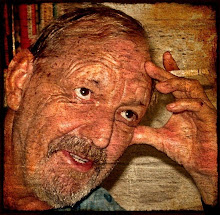Their numbers went:
1 - sesei
2 - sandi
3 - sinati
4 - fusese
5 - fakete
6 - faketi-tarosi-taure-sesei
7 - faketi-tarosi-taure-sandi
8 - faketi tarosi taure sinati
9 - faketi tarosi taure fusese
10- faketi tau tau
It helps to understand it when you learn that fakete (5) is hand.
6 is faketi-tarosi-taure-sesei = hand-one side-other side-one.

But other New Guinea Papuan language groups take the body-part tallying to extremes.
The Oksapmin developed a body-part counting system that went beyond one hand, up the arm to the head, and then down the other side. The Oksapmin example results in a numbering system of base 27.

They also had to memorise each of the 27 body-part names:
(1) tip^na, (2) tipnarip, (3) bum rip, (4) h^tdip, (5) h^th^ta, (6) dopa, (7) besa, (8) kir, (9) tow^t, (10) kata, (11) gwer, (12) nata, (13) kina, (14) aruma, (15) tan-kina, (16) tan-nata, (17) tan-gwer, (18) tan-kata, (19) tan-tow^t, (20) tan-kir, (21) tan-besa, (22) tan-dopa, (23) tan-tip^na, (24) tan-tipnarip, (25) tan-bum rip, (26) tan-h^tdip, (27) tan-h^th^ta.s
It's easier than it looks - you only have to go up one side, and then repeat the same names in reverse, down the other.
Most numbering systems started with finger-tallying, and the physical way this was done affects the number words that were derived from it.
Or six can be the little finger on the second, left hand.
In Gadsup, 6 = apä?tä?te mänayemänä?i - 1 added to 'weak hand'
In Bargam, the word for 5 is abainakinta (thumb-1); thumb is abainagin.
Fist should show up in many of the number words for 5, as well. (Trouble is, I don't know many Papuan languages, and not many travelling language recorders wrote down words for 'fist').I'll find the connections someday



